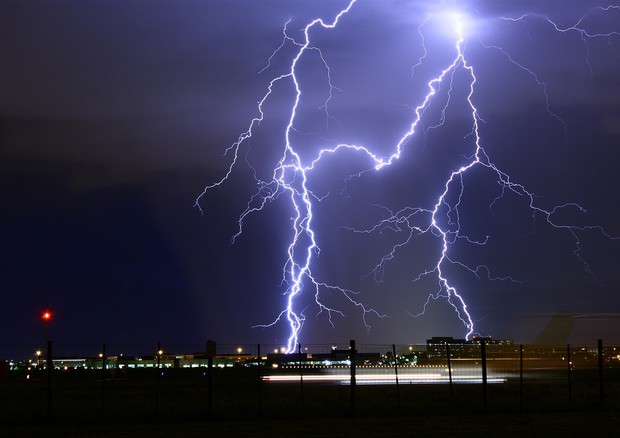Measurement and Modeling of Both Distant and Close Electric Fields of an M-Component in Rocket-Triggered Lightning
Q. Li; F. Rachidi; M. Rubinstein; J. Wang; L. Cai et al. “Measurement and Modeling of Both Distant and Close Electric Fields of an M-Component in Rocket-Triggered Lightning,” Journal of Geophysical Research: Atmospheres. 2020. Vol. 125, num. 21. https://doi.org/10.1029/2019JD032300
Simultaneous measurements of current and multiple-station electric fields associated with a 5.4-kA-peak M-component in rocket-triggered lightning are presented in this study. A close-range electric field measurement site was located northeast of the triggering site, 195° clockwise from South, at a distance of 78 m, while the distant multiple stations in this study were located southwest of the lightning triggering site (25–48°, clockwise from South) at a distance ranging from 69 to 126 km. Both the fast microsecond-scale and slow millisecond-scale pulses were observed at six distant stations. At the close station, the fast pulse was not noticeable. The magnitude and half-peak width of the fast pulse were in the range of 0.91–1.93 V/m and 2.0–3.0 μs, respectively. The corresponding parameters for the slow pulse were, respectively, in the range of 0.59–1.29 V/m and 20.0–25.1 μs. The time lag between the onset of the channel-base current and the far electric field of the M-component was 18 μs. This time lag was used to deduce the ratio of the M-component channel length and the wave speed. The classical guided wave M-component model proposed by Rakov et al. (1995, https://doi.org/10.1029/95JD01924) to simulate the slow, millisecond-scale field pulse assumes that neither the incident nor the reflected current wave undergoes attenuation even though the wave propagation occurs along a lossy channel. A modified guided wave M-component model is proposed in this study in which the M-component current wave attenuates with an exponential decay. Based on the best agreement achieved between the simulated fields using the modified two-wave M-component model and the observed near and far electric fields, the channel length, the M-component wave speed, and the current attenuation constant were inferred, respectively, as 1.8 km, 1 × 108 m/s, and 3 km. It is shown that the modified guided wave M-component model is able to reproduce reasonably well the electric fields both at close and far distance ranges.

